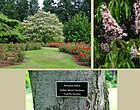Note: This is a project under development. The articles on this wiki are just being initiated and broadly incomplete. You can Help creating new pages.
Difference between revisions of "Aesculus indica - Indian horse chestnut"
(→References) |
(→External Links) |
||
| Line 81: | Line 81: | ||
==External Links== | ==External Links== | ||
| − | * [https://www.alwaysayurveda.com/aesculus/] | + | * [https://www.alwaysayurveda.com/aesculus/ Aesculus indica on always ayurveda.com] |
| − | * [http://powo.science.kew.org/taxon/urn:lsid:ipni.org:names:60450399-2] | + | * [http://powo.science.kew.org/taxon/urn:lsid:ipni.org:names:60450399-2 Aesculus indica on science.kew.org] |
| − | * [http://temperate.theferns.info/plant/Aesculus+indica] | + | * [http://temperate.theferns.info/plant/Aesculus+indica Aesculus indica on the ferns.info] |
[[Category:Herbs]] | [[Category:Herbs]] | ||
[[Category:Plants of western ghats]][[Category:Trees]][[Category:Himalayas]] | [[Category:Plants of western ghats]][[Category:Trees]][[Category:Himalayas]] | ||
Revision as of 12:45, 29 April 2019
Pangara is a temperate deciduous tree in the soapnut family, native to the western Himalayan region. They grow at altitudes from 1800 - 3000 m.
Contents
- 1 Uses
- 2 Parts Used
- 3 Chemical Composition
- 4 Common names
- 5 Properties
- 6 Habit
- 7 Identification
- 8 List of Ayurvedic medicine in which the herb is used
- 9 Where to get the saplings
- 10 Mode of Propagation
- 11 How to plant/cultivate
- 12 Commonly seen growing in areas
- 13 Photo Gallery
- 14 References
- 15 External Links
Uses
Parts Used
Chemical Composition
The leaves contain aescin, quercetin and beta-sitosterol. Stems also contain rutin, astragalin, aesculin. Seeds contain aescin, aesculuside A and B, also aliphatic esters.[1]
Common names
| Language | Common name |
|---|---|
| Kannada | |
| Hindi | Akhnor, Goon, Khanir, Pangara |
| Malayalam | |
| Tamil | |
| Telugu | |
| Marathi | NA |
| Gujarathi | NA |
| Punjabi | NA |
| Kashmiri | NA |
| Sanskrit | |
| English | Indian Horse Chestnut |
Properties
Reference: Dravya - Substance, Rasa - Taste, Guna - Qualities, Veerya - Potency, Vipaka - Post-digesion effect, Karma - Pharmacological activity, Prabhava - Therepeutics.
Dravya
Rasa
Guna
Veerya
Vipaka
Karma
Prabhava
Habit
Identification
Leaf
| Kind | Shape | Feature |
|---|---|---|
| Digitate | Opposite | The leaves are large, opposite, digitate, glossy, laceolate ( Boat shaped),margin entire and venation pinnate, it forms a umbel shaped at the branch apex |
Flower
| Type | Size | Color and composition | Stamen | More information |
|---|---|---|---|---|
| bisexual | terminal panicle | white | the flowers are found in a long stack about 40 cm long and bearing about 300 flowers |
Fruit
| Type | Size | Mass | Appearance | Seeds | More information |
|---|---|---|---|---|---|
| Fleshy capsules | Large brown seeds | {{{6}}} |


